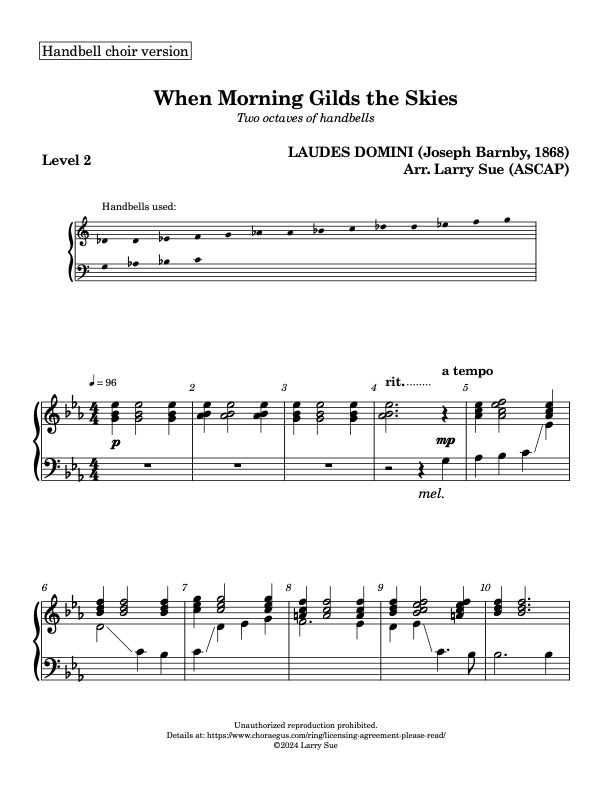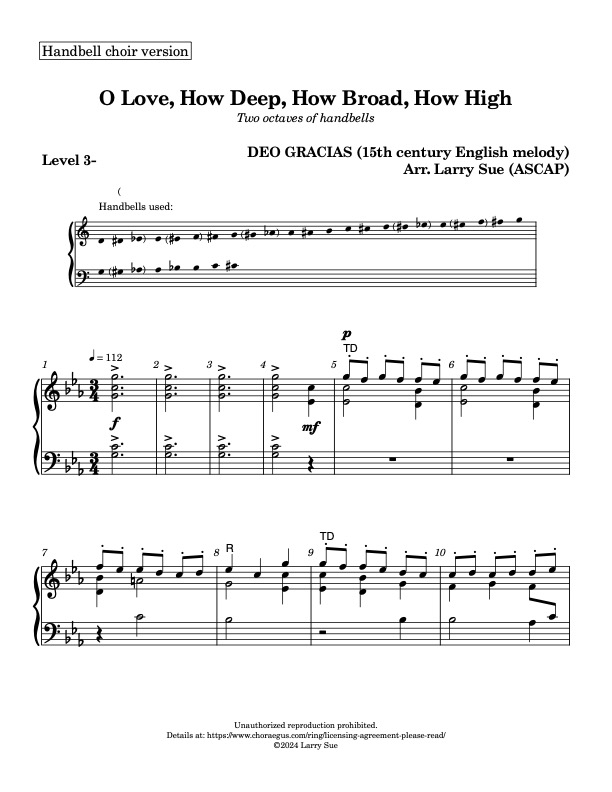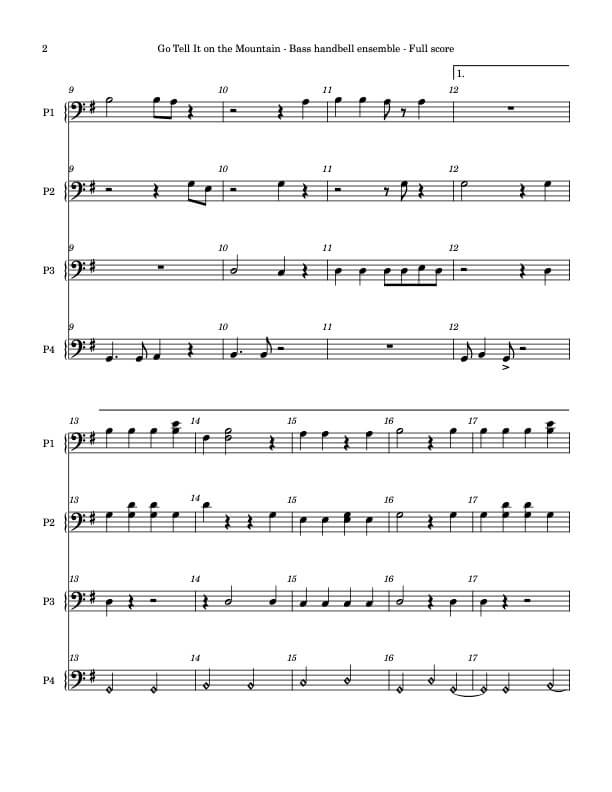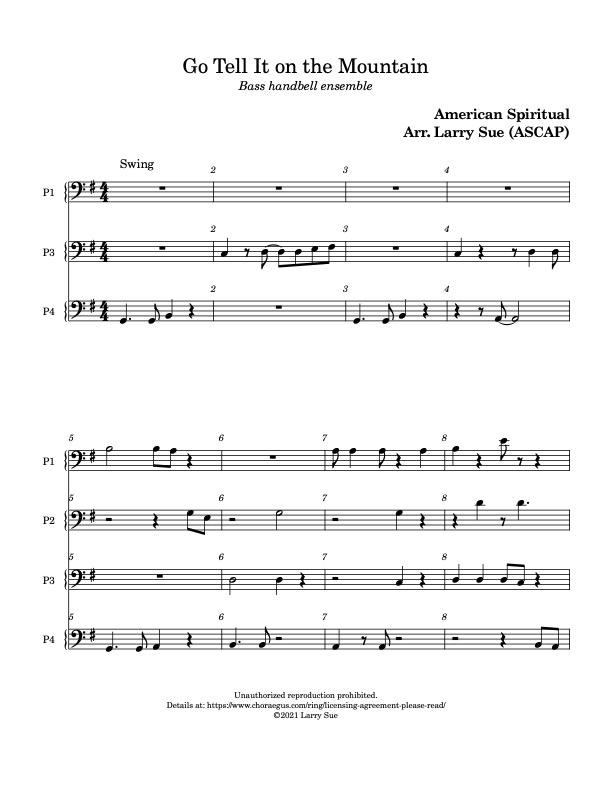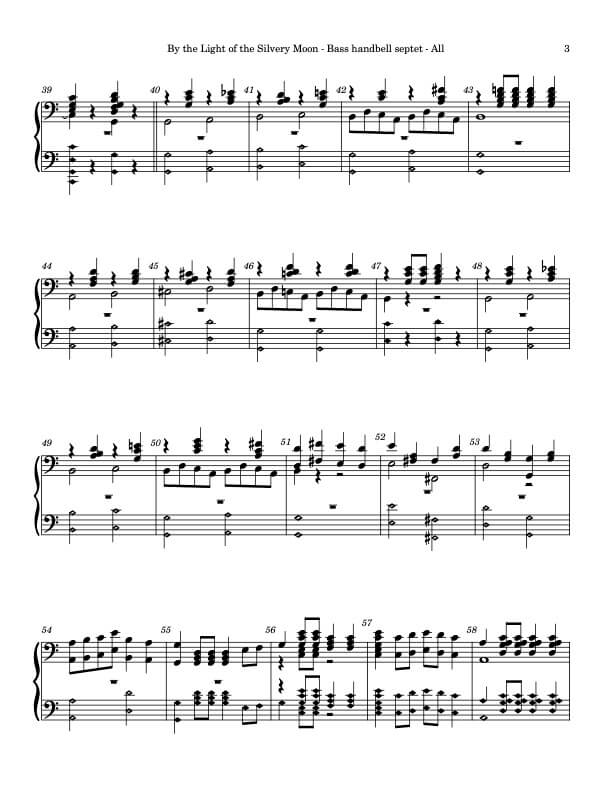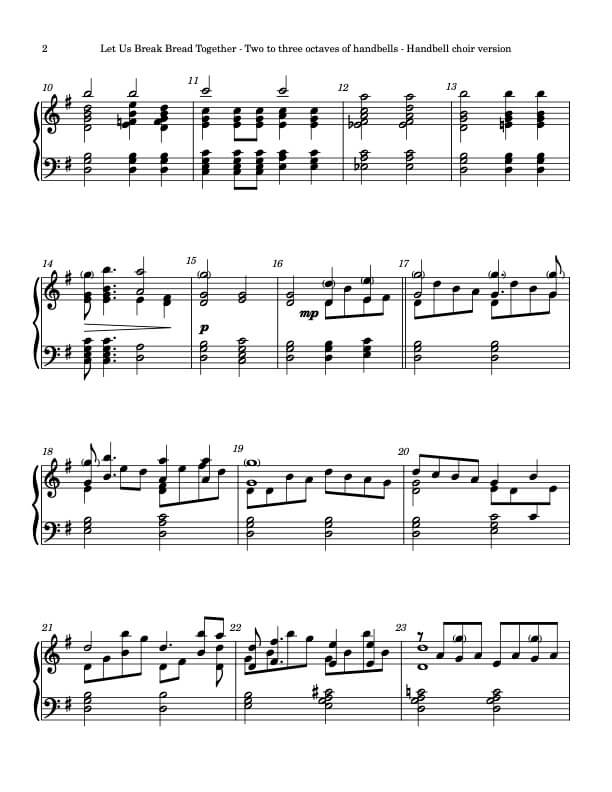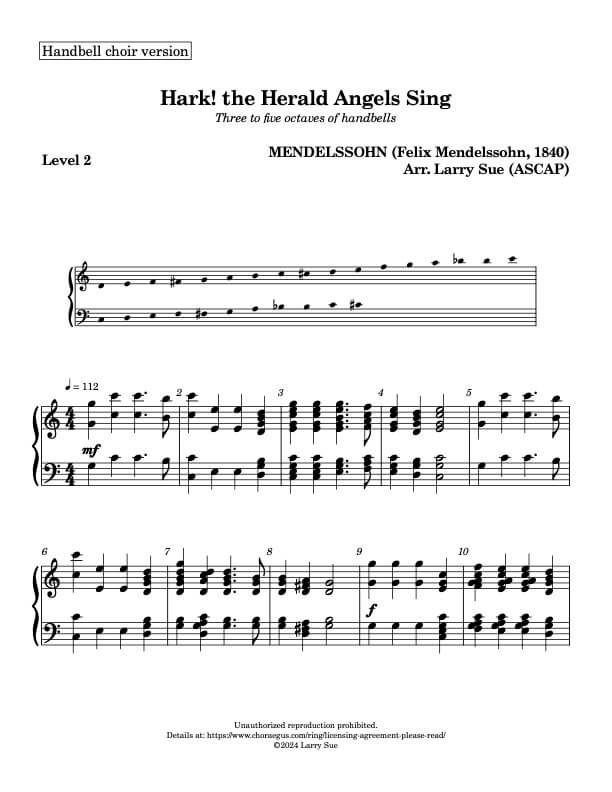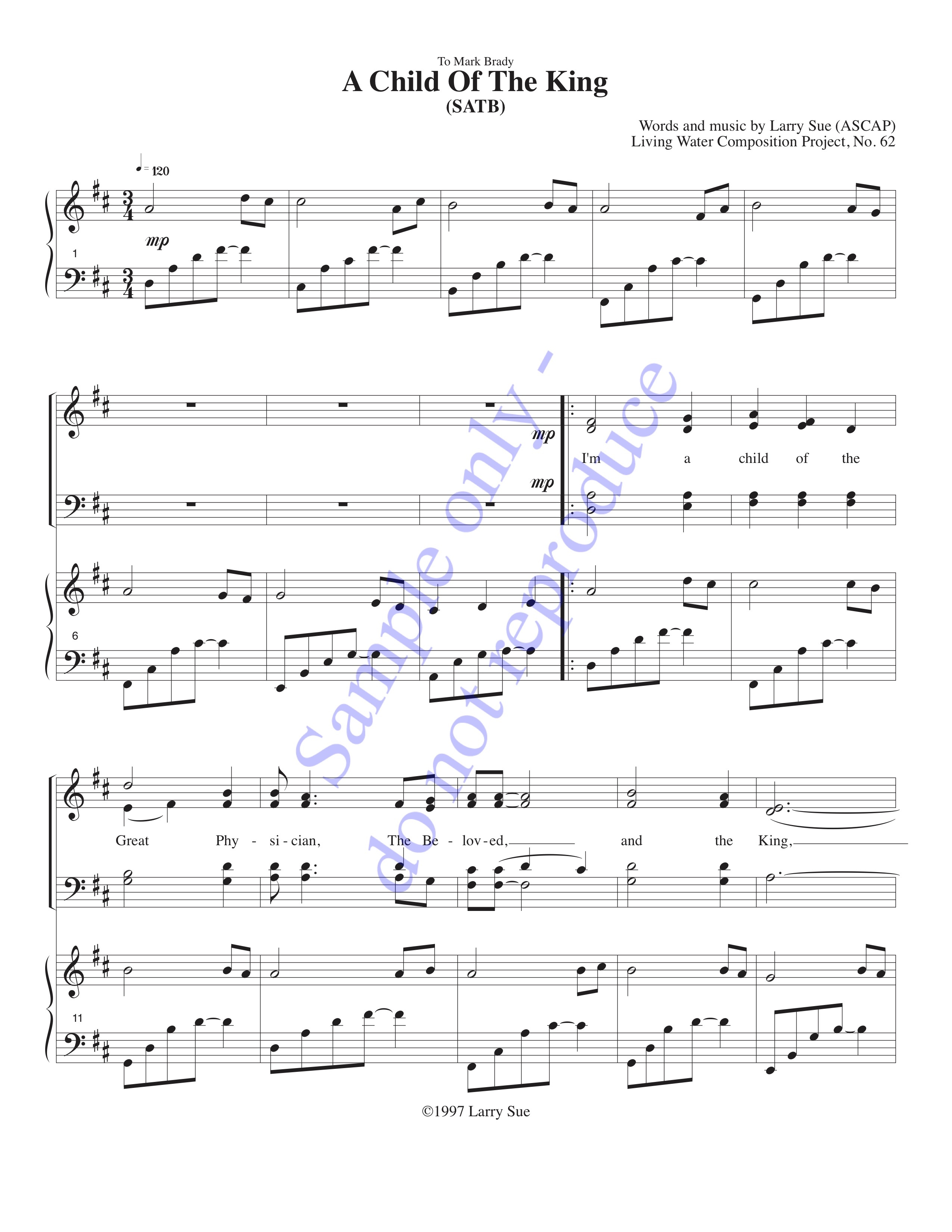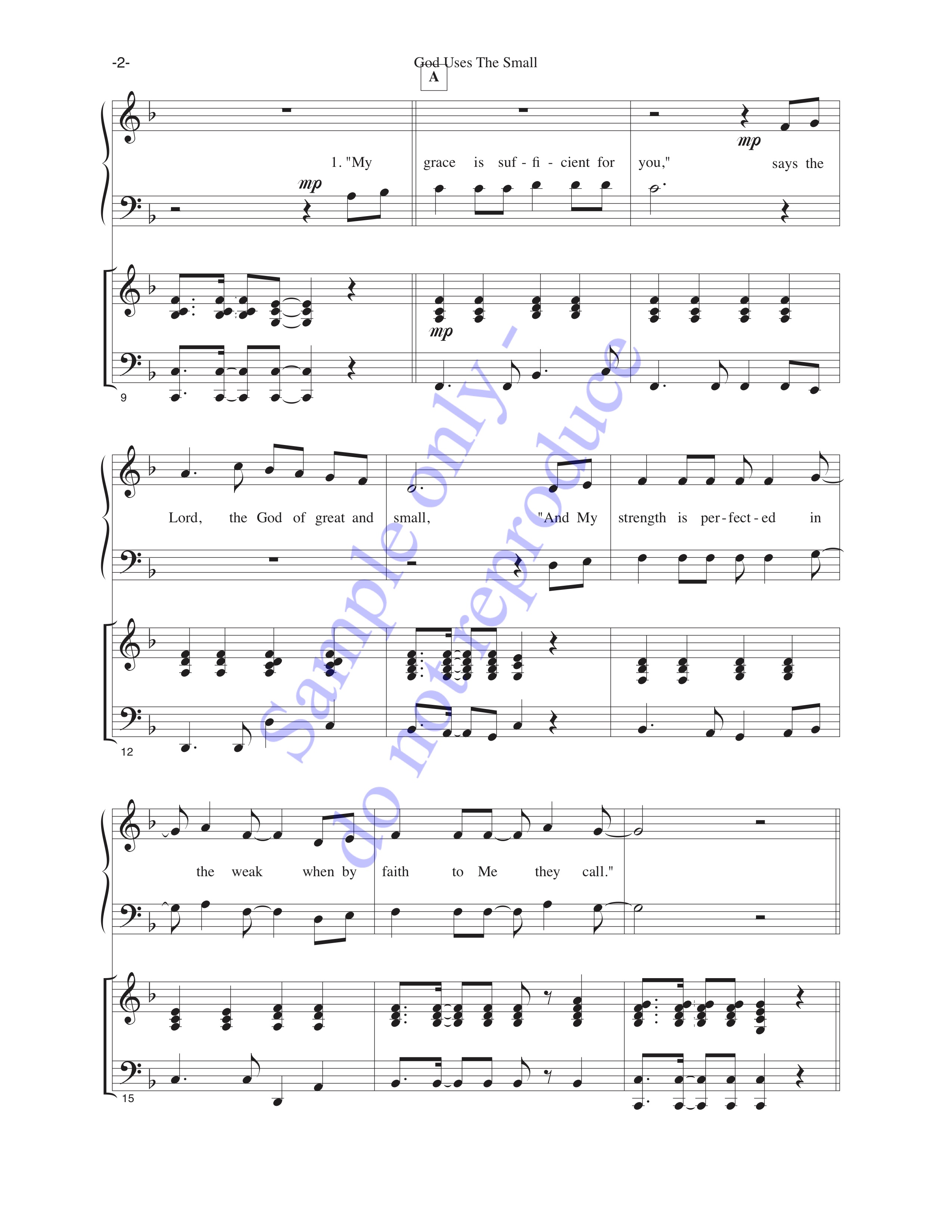[Tomorrow Shall Be] My Dancing Day tells the story of salvation from Christ’s point of view. This makes the lyrics a bit mystical, because it draws in quite a lot of soteriological (soteriology = “doctrine of salvation”) in the form of Biblical references. However, it presents these references charmingly, because they’re all focused on the chorus, which tells us to sing and rejoice because of what the Savior has done to make the heavenly celebration possible. Rejoice and celebrate with our arrangement for two octaves of handbells!
Tomorrow shall be my dancing day: / I would my true love did so chance
To see the legend of my play, / To call my true love to my dance:
Refrain:
Sing, O my love, O my love, my love, my love;
This have I done for my true love.
Then was I born of a virgin pure, / Of her I took fleshly substance;
Thus was I knit to human nature, / To call my true love to my dance: [Refrain]
In a manger laid and wrapped I was, / So very poor, this was my chance,
Betwixt an ox and a silly poor ass, / To call my true love to my dance: [Refrain]
Then afterwards baptized I was; / The Holy Ghost on me did glance,
M Father’s voice heard from above, / To call my true love to my dance: [Refrain]
Then down to hell I took my way / For my true love’s deliverance,
And rose again on the third day, / Up to my true love and the dance: [Refrain]
Then up to heaven I did ascend, / Where now I dwell in sure substance
On the right hand of God, that man / May come unto the general dance: [Refrain]
Purchasing the handbell choir version of this arrangement grants permission to print and maintain up to fifteen copies for your handbell ensemble; purchasing the single copy version grants permission to print and maintain one copy. Purchase also gives permission for performance, broadcasting, live-streaming and video-sharing online. See our licensing agreement for full details, and please remember to mention the title and arranger of the piece on video-sharing sites, social media and any printed materials such as concert programs.
Find Larry and Carla on Facebook!




